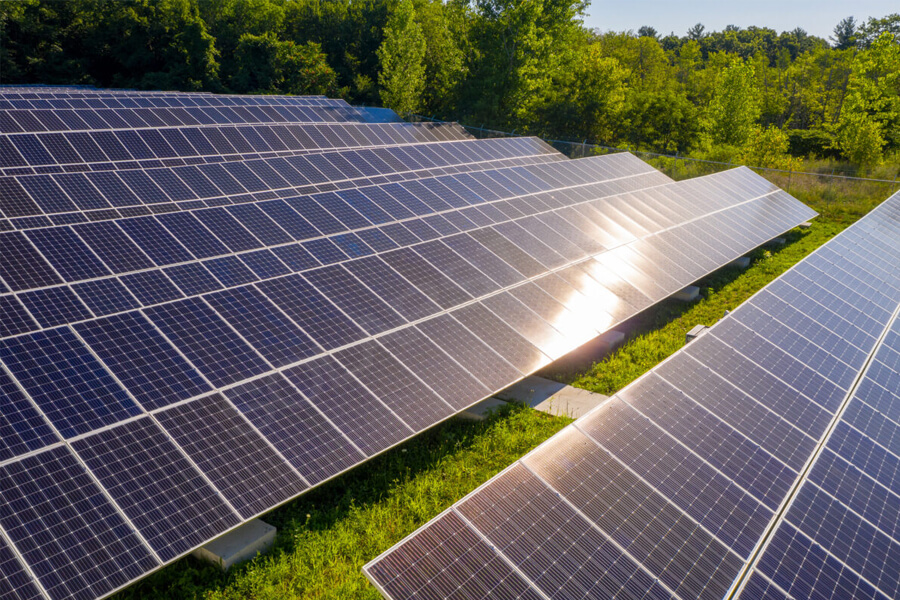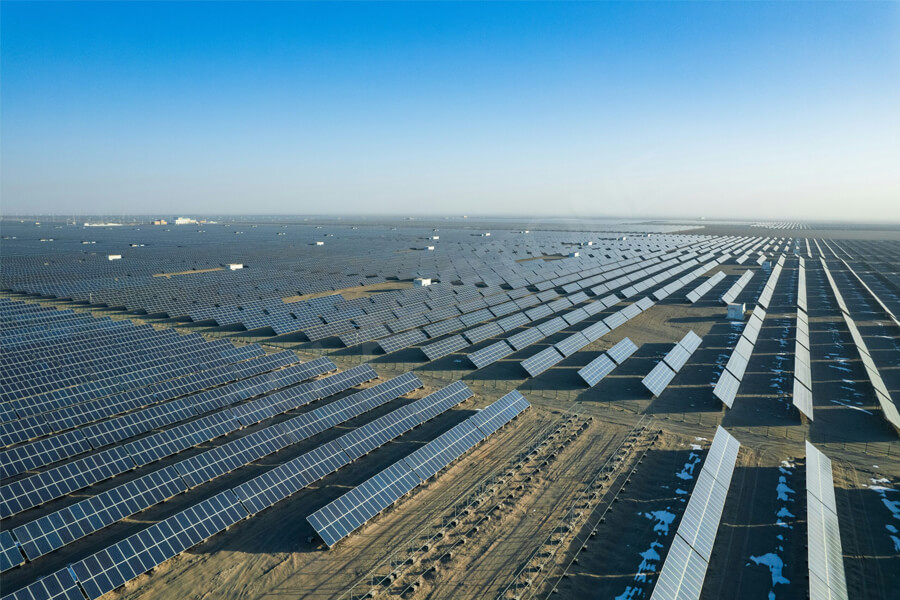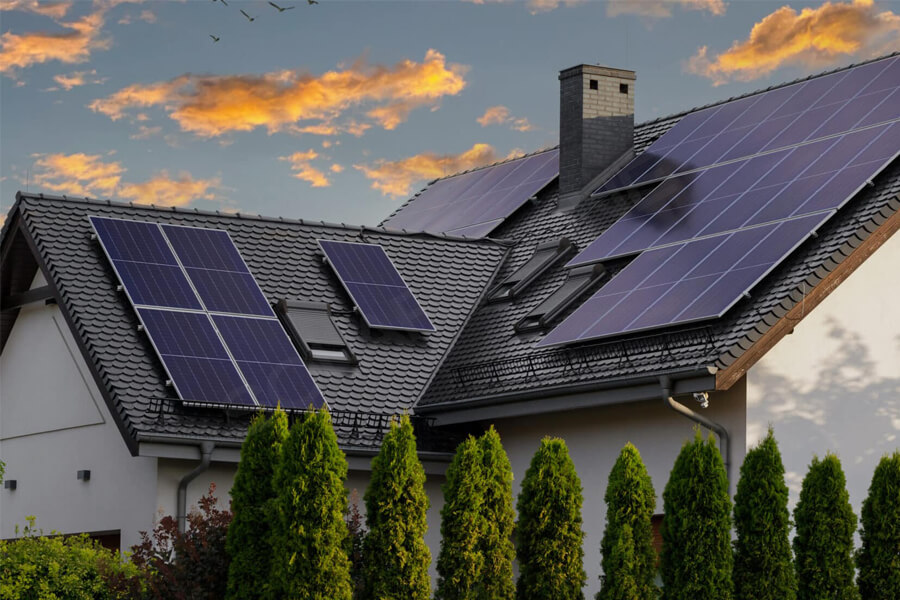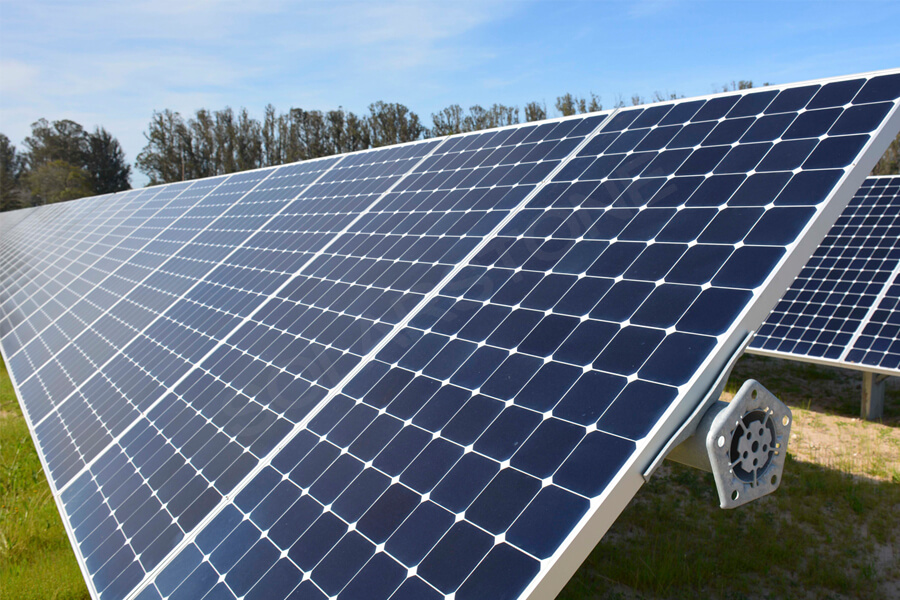Discover the latest trends and developments in the solar energy industry, explore competitive landscape, market size prediction, technological innovation, and regional influence, such as in the Middle East, South Africa, and the United States.
The growing demand for green energy means that the solar energy industry is in a constantly developing state. The solar energy market for solar photovoltaic (PV) systems has been constantly evolving with the advancement of solar technology, and is expected to grow significantly in the coming years.
From rooftop solar installations to advancements in utility scale power plants and solar modules, we aim to shape the exciting development of solar energy in the future.
#1. Advanced Technology
Since the widespread application of the first solar system in the 1980s, photovoltaic systems have made significant progress. Although single crystal and polycrystalline panels still lead in efficiency and power generation, new solar technologies have been emerging.
Perovskite solar cells are a new type of solar cell. They have low manufacturing costs and can be manufactured into various shapes and sizes.
The downside is that their efficiency is lower than traditional solar cells. These batteries have achieved a power conversion efficiency of up to 25% in the laboratory, but their efficiency in commercial products is still only around 15%.
However, perovskite solar cells are expected to become more efficient and cost-effective in the coming years.
Organic solar cells are another new type of solar cell made from organic materials. The production cost of organic solar cells is also very low and they have flexibility. However, like perovskite batteries, their efficiency is lower than traditional solar cells.
Organic batteries have achieved a power conversion efficiency of up to 17% in the laboratory, but their efficiency in commercial products is still only around 10%. These batteries are also more unstable than traditional solar cells and may degrade over time due to the organic materials (usually carbon) used in their manufacturing.
Quantum dot solar cells are a new type of solar energy technology that utilizes quantum dots to convert sunlight into electricity. Quantum dot solar cells have high efficiency and can be made into various colors. However, they are still in the early stages of development and have not yet been commercialized.
Quantum dot batteries have achieved a power conversion efficiency of up to 22% in the laboratory, but they still have an efficiency of only about 15% in commercial products. They are also more expensive than traditional solar cells.
Transparent solar cells are a new type of solar cell that can turn windows into sustainable energy without affecting the landscape. These batteries are still in the early stages of development, but have the potential to completely change the way we use solar energy.
They have achieved a power conversion efficiency of up to 10%, but they are still very expensive and have lower efficiency than traditional solar cells.
Transparent solar panels may one day replace windows in large commercial buildings.
Concentrated solar energy (CSP) uses mirrors or lenses to gather sunlight and heat fluids. Then the heat can be generated for heating or seawater desalination. CSP is not as common as photovoltaic solar energy, but it is a promising technology for large-scale solar power generation.
#2. More efficient and sustainable lifecycle
By analyzing the lifecycle of solar panels, we have the technology to make solar cell manufacturing, transportation, and recycling more efficient and sustainable.
There are multiple methods to improve the manufacturing efficiency of solar cells, using less energy and water, as well as fewer chemicals.
For example, some manufacturers use less energy intensive methods to produce the main material for solar cells, polycrystalline silicon.
The use of renewable energy sources such as solar and wind energy in the manufacturing process of solar panels can help manufacturers reduce their dependence on fossil fuels and lower the overall carbon footprint of solar panels.
Solar cell materials, such as glass or aluminum, can be recycled. These materials can then be used to produce new solar cells, thereby reducing the demand for raw materials and related environmental impacts.
#3. Cost uncertainty caused by price decline and supply chain issues
In recent years, the price of solar panels has sharply declined due to technological progress and economies of scale.
In 2020, the average cost of solar cells was $0.31 per watt, compared to $0.66 per watt in 2010. The decrease in price makes solar energy more attractive and accessible to a wider range of consumers.
The rapid development of the solar energy industry has brought about economies of scale. Therefore, solar panel manufacturers can produce solar panels more efficiently and at a lower cost.
If more people and businesses install solar panels, it will lead to an increase in demand for solar panels and solar installation personnel, which should theoretically lead to further price declines.






